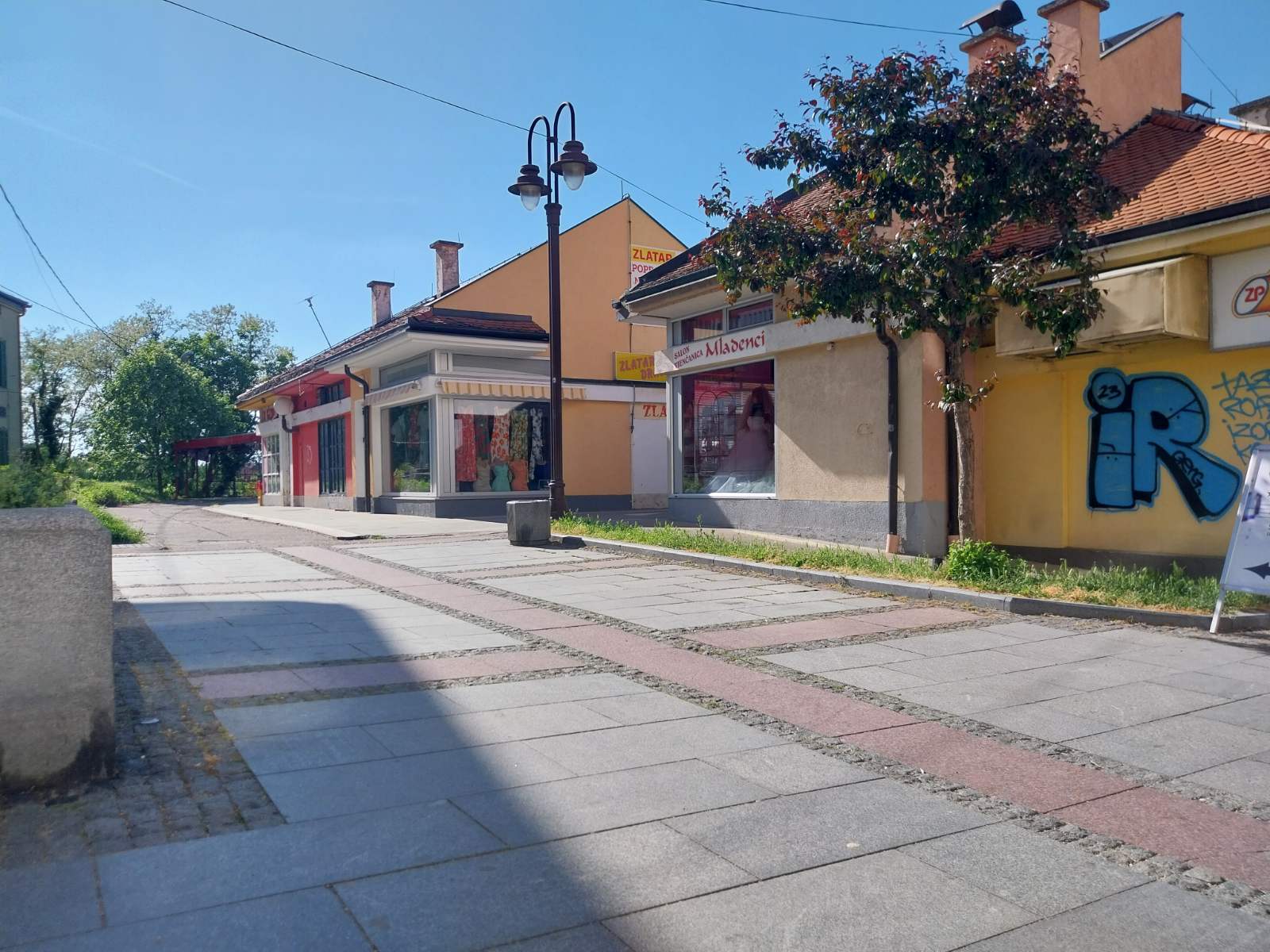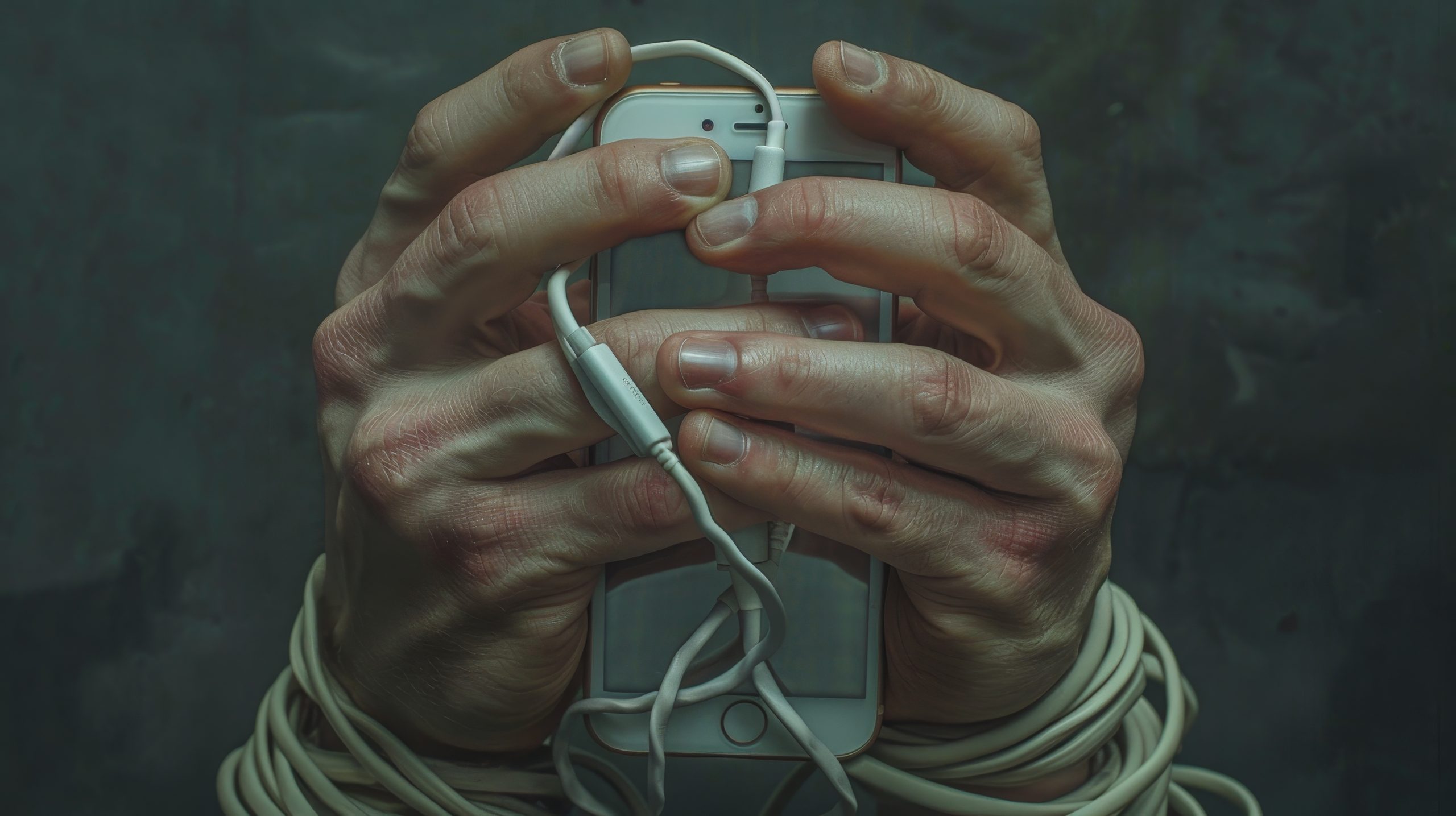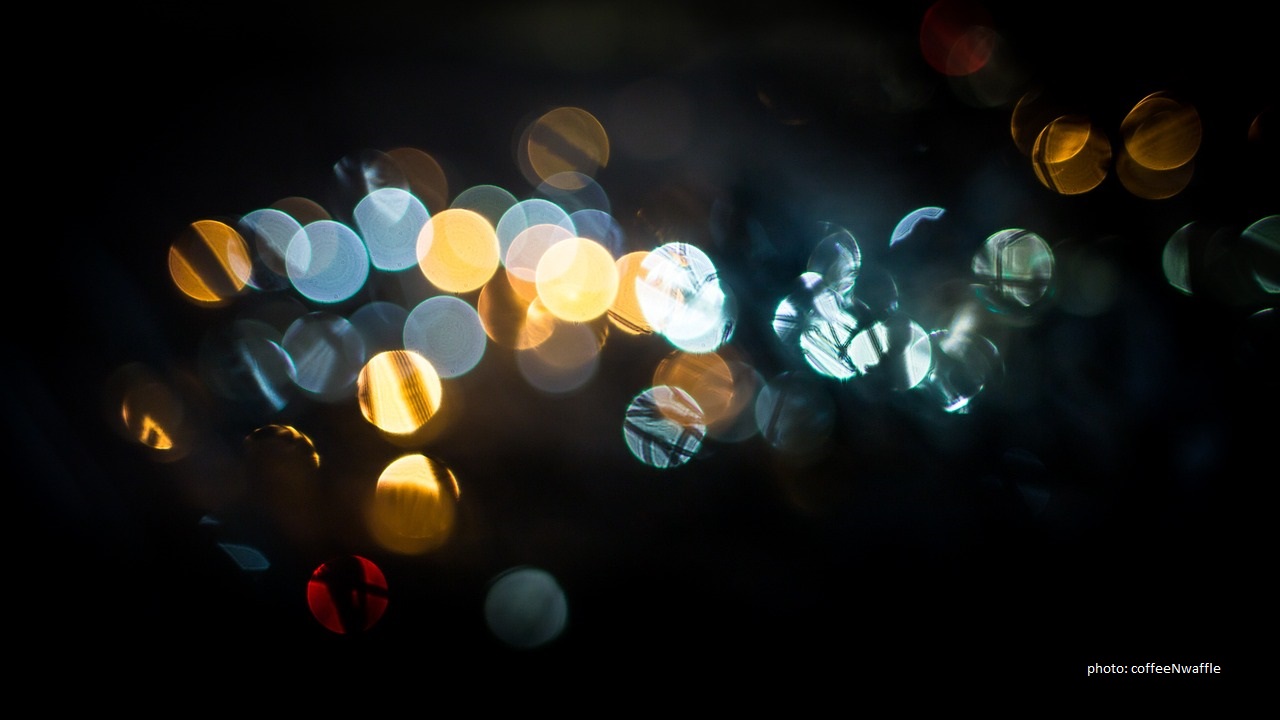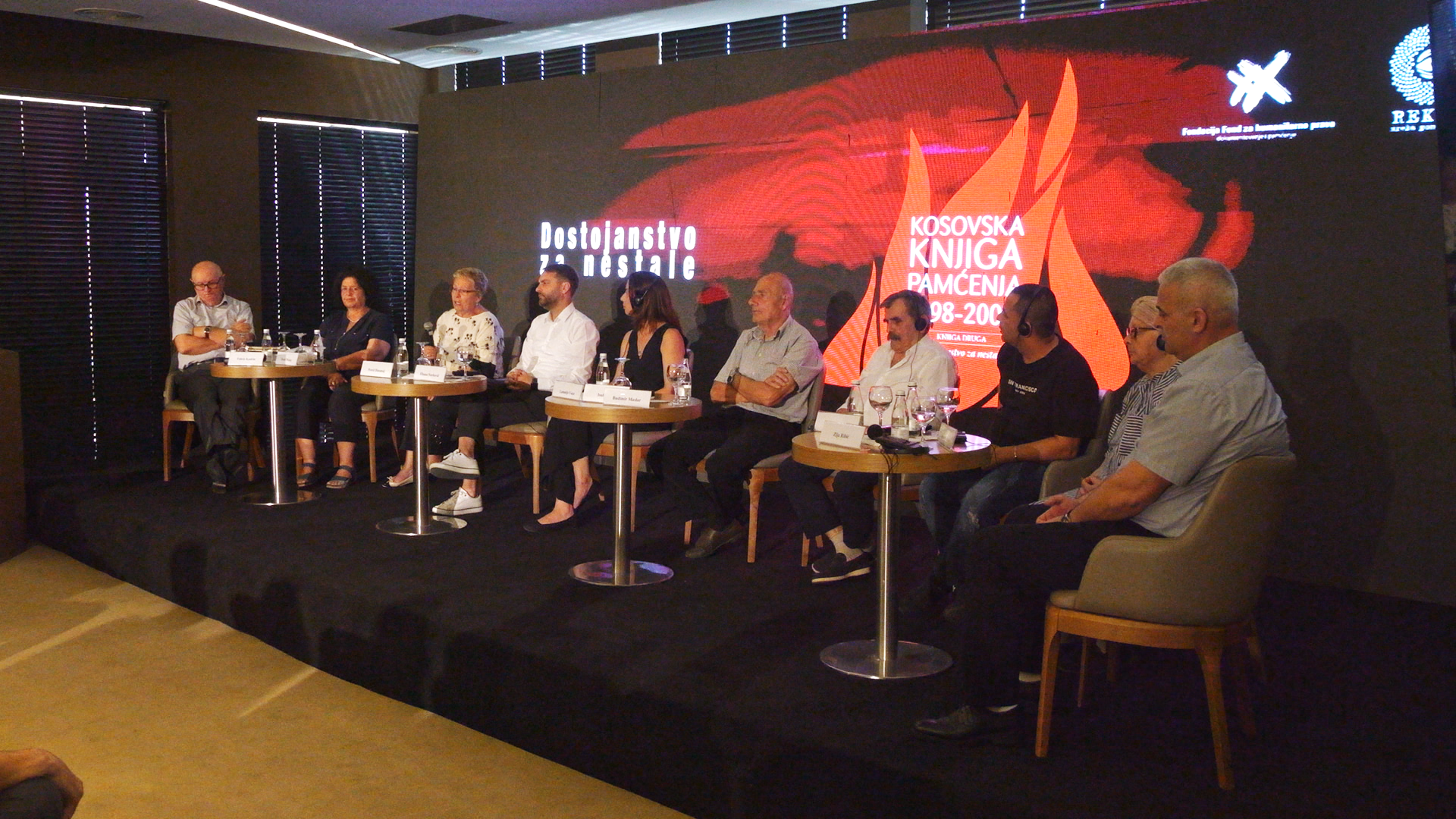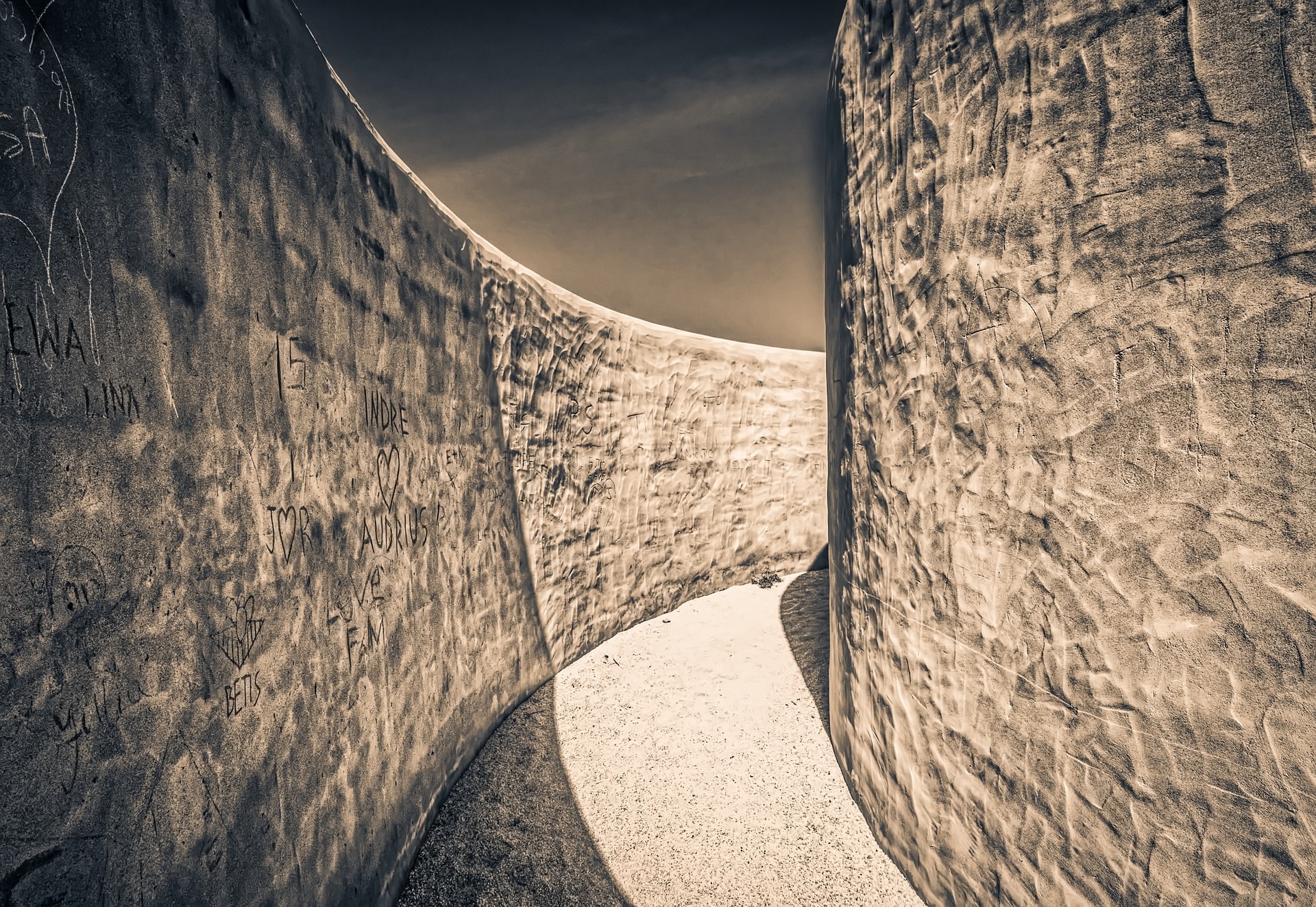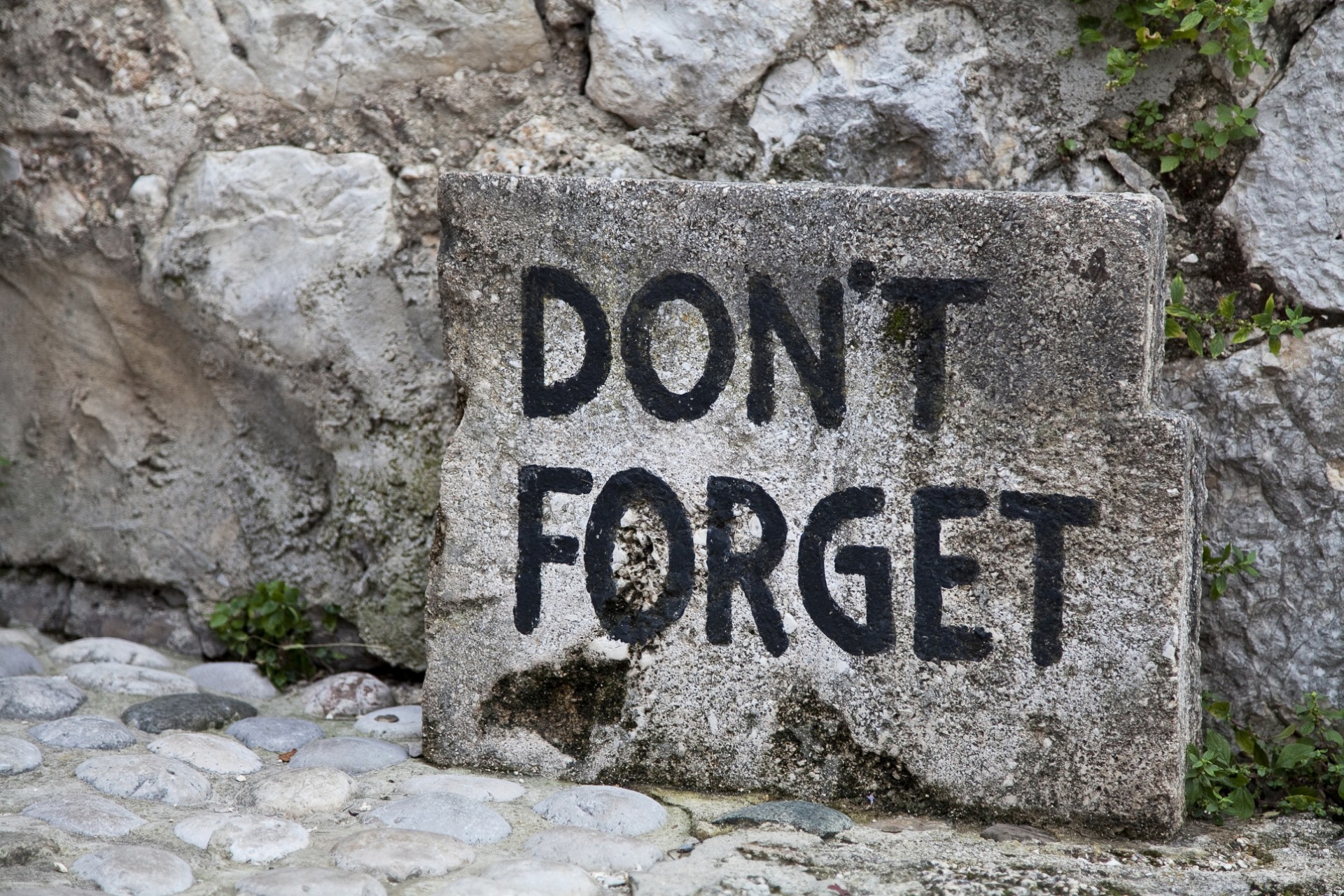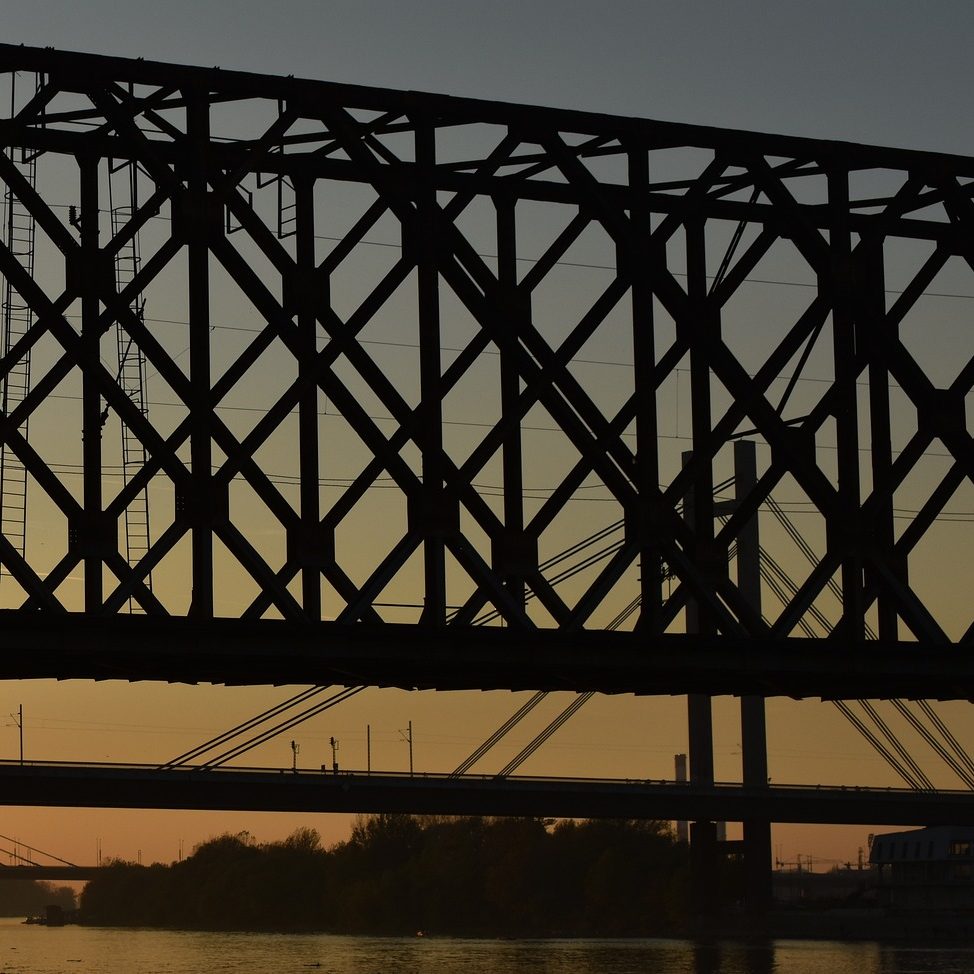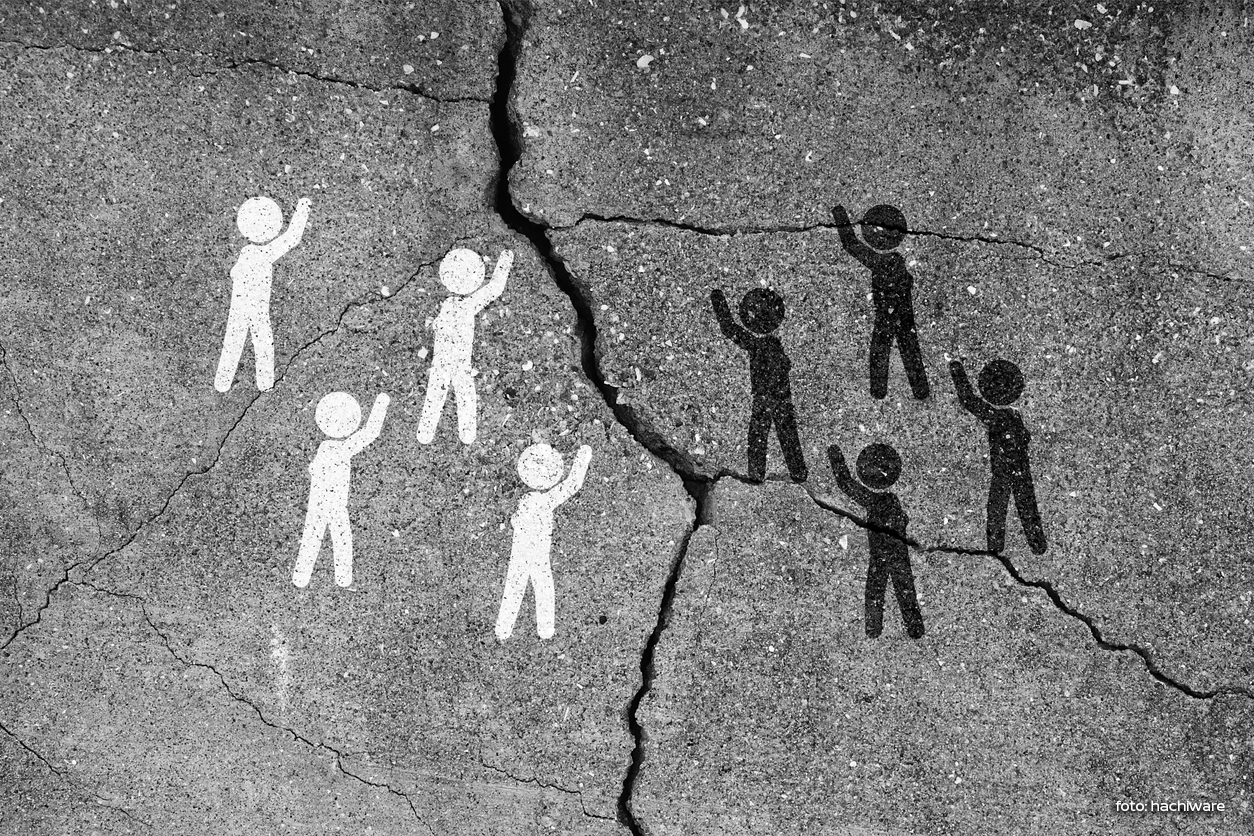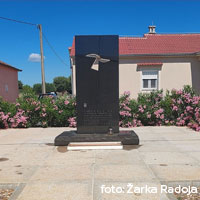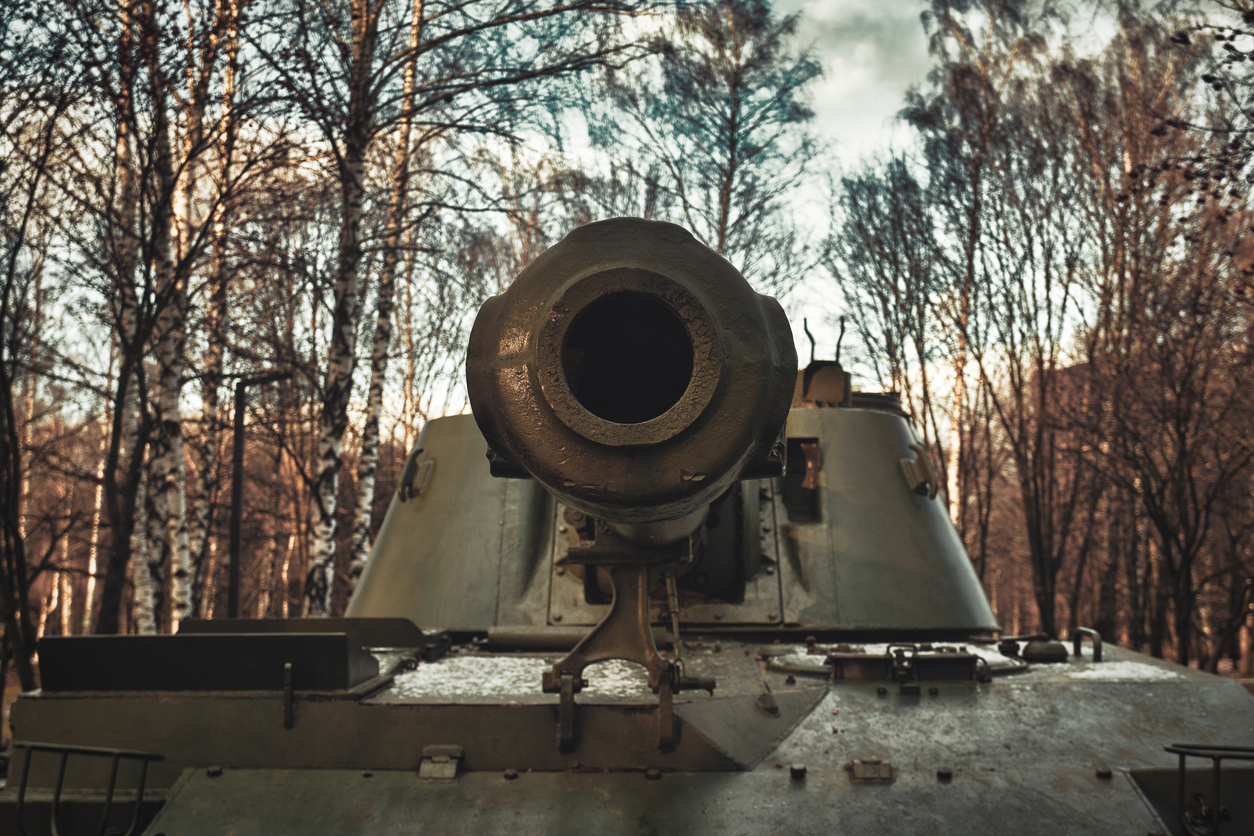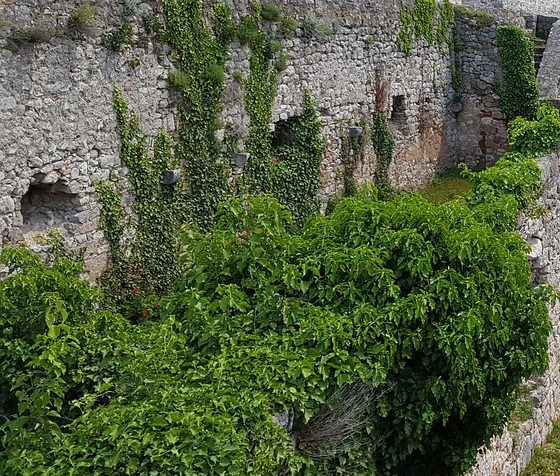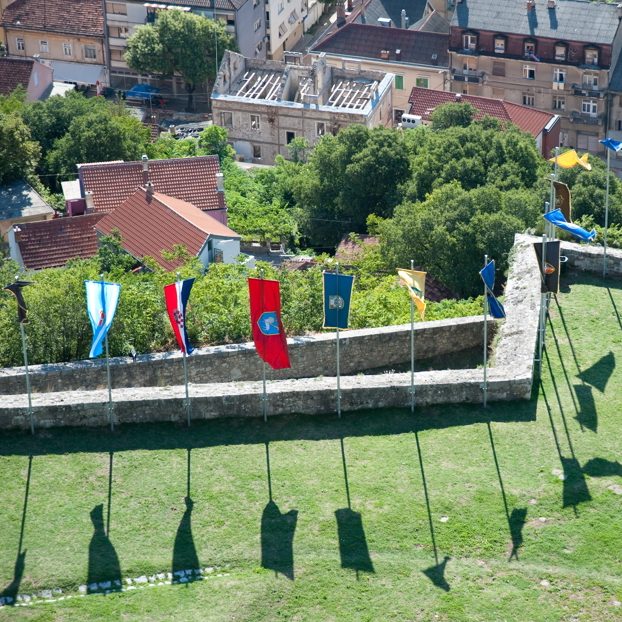By: Edvin Kanka Ćudić
Every day, the locals walk down the Brčko promenade. The view of the Craftsmen’s Centre takes them back to the beginning of the war.
Destruction of the Sava bridge which had connected Bosnia and Herzegovina (BiH) with Croatia, in the early morning hours of the last day of April 1992, marked the Serb occupation of Brčko, a town in the north of BiH. Brčko is a town which has the largest docks in the homeland of Nobel Prize winners Ivo Andric and Vladimir Prelog. Hence many citizens witnessed parts of mutilated bodies of civilians, mainly from the municipalities of Doboj, Cazin, Jelah, Ključ, Sanski Most, Tešanj and Velika Kladuša.[i] Between 70 and 100 men, women and children were killed.[ii] The windows of a third of the houses downtown were shattered as a consequence of the destruction of the bridge. Windows and door frames hung there shattered. Some buildings were left roofless.
In the days which followed, detention camps were established. Members of the non-Serb population were taken and held there. The places best known for detention were the docks and the gymnasium. Torture was committed in the police station too. Several hundred civilians were murdered.
From 4 May till August, a large but still not accurately determined number of men, women, children and elderly persons of Bosniak and Croatian ethnicity were imprisoned in the detention camp “Luka”. The first camp administrator was Goran Jelisić, better known as the “Serbian Adolf“. He was succeeded in that position by Kostantin – “Kole”- Simonović. A share in abusing the prisoners was also taken by Ranko Češić. He is also known for the crimes committed at the “Partizan“physical education hall, where fifty non-Serb civilians were detained.
Parquet worker Hajrudin Muzurović was last seen by his sister Suhra at the end of that April. Soon after that, he left for Brka, a village nearby Brčko, to stay at a friend’s cottage. They were seeking refuge till everything had blown over. However, he returned to the town shortly afterwards. On 3 May, brother and sister had their last telephone conversation. He was in Novo Brčko at the time, in the basement of a building. Two days later, with their mother and younger brother Mevludin, Suhra fled to Gornji Rahić. From then on they stayed together and never separated until they returned to the town in 2003.
The day after he talked to his sister, Hajrudin was brought to the military barracks, from the “Kula” residential block. Along with Alaga Selimović. The latter was beaten at that location. Along with Alaga Selimović. Thirty-nine-year-old Šuhra’s brother and other men from the garrison were taken to the Public Security Station. On May 7th, Muzurović was taken from the group that was lined up in the courtyard of the Brčko police.
Goran Jelisić, accompanied by several soldiers, herded Husein Kršo and Hajrudin Muzurović ahead of him. Into a nearby alley at the entrance of the Craft Center, coming from the direction of the oldest hotel “Posavina.” The “Serbian Adolf” was dressed in a police uniform. The families of the victims had known each other from before. Now they were going to their deaths together. Several shots were fired. Both were dead. As the man from Bijeljina was pushing them ahead, and then after the blood started crawling along the cobble stones of the craftsmen’s quarter, Belgrade’s reporter Bojan Stojanović recorded the execution. The world soon became aware of the ethnic cleansing.
In 1997, Suhra found out the information about her brother for the first time. Till that moment, she had not known anything about his fate. She says her family experienced the same history as her father. History had repeated itself. Her children too, just like her father Asim, were deprived of their nearest of kin. His uncles were Ilijas and Abaz, from the Ljuca family. They used to live in Bijelo Polje, Montenegro, until the Second World War. Her father was a young lad when his uncles were killed.
They were massacred. They were caught alive by the Serbs of Bijelo Polje. Plucked their eyes out and brought them to the yard so that others could see them, explained Hajrudin’s sister. The eyewitnesses from Sanjak ran away to escape the same fate. First to Peć. Some went even further. Suhra’s father moved to the Sava valley. Fifty years later, Asim’s son would go through a similar experience.
If it had not been for the establishment of the District of Brčko , with its special status within Bosnia and Herzegovina, the regional hub of Bosnia’s Sava basin would probably be referred to as an ethnically cleansed town. However, the international community has invested a lot of effort in creating the District. Due to resolute vision and politics full of hope, the families of the Serbian Adolf’s victims have returned to their home town. According to the findings of the Association for Social Research and Communication (UDIK), there are 51 monuments listed in the area of the Brčko District. The three peoples have their respective sites of memory. More of those erected monuments commemorate the fighters than the murdered civilians.
Hajrudin Muzurović and Husein Kršo,[iii] were exhumed in October 2006, from the Gorice mass grave. When the crime against him was perpetrated, Kršo left behind a wife and two children. He was murdered at the age of 33. In their publication on the Brčko crimes, Rasim Muratović and Ermin Kuka state that they were executed by Goran Jelisić. They were buried in June 2007, at the local cemetery of Ivica. That was the first collective funeral of civilian victims held in this town on the banks of Sava.
Every day, the locals walk down the Brčko promenade. The view of the Craftsmen’s Centre takes them back to the beginning of the war. Suhra Ahmetović once remarked, “People are eating “ćevapi” on the spot where my brother’s blood was shed”. There was also a garbage container placed in that spot. A wedding dress parlour is nearby. Hajrudin Muzurović was going to get married that May. The celebrations had previously been scheduled for the winter, just before the New Year’s Day 1992. He had postponed it because of his father’s death.[iv]
Although the world remains aware of and appalled by the pictures of the cruel execution, his mother Ćamila still lives in ignorance. She has never been told that her son Hajrudin is in the photo taken by Stojanović.[v] Each May, the photographs of murdered civilians, including the photographed murder, testify to the crimes in Brčko’s Youth Square. As a warning, that it should never happen again, anywhere.
In 2023, the UDIK initiated an appeal for the commemoration of the two civilians in the place of their murder, but Brčko’s local parliament has not bothered to consider this petition for a whole year.[vi] And, while the District constitutes an example of multiculturalism in the land of Meša Selimović, it simultaneously also stands as a symbol of the grotesque. The insignia of the warring parties from the nineties are imprinted through megalomaniac monuments. They are at a hundred metres’ distance from each other. The one erected for the civilians last year had to be in a form of a compromise. It was dedicated to the civilian victims of the Second World War and the victims of the last war.
Despite the documented murder, Kršo and Muzurović are forgotten by their own town. They are not considered enough of a reason for a memorial plaque, which would cause mutual discomfort and disagreement inside the local multiethnic government. Yet, they live in the memories of their families. Because it is to them that they matter the most. But it is also important to them to mark the sight of execution of those whose death helped the world become aware of the war crimes being perpetrated in Brčko.
(photo: Edvin Kanka Čudić)
[i] Jusuf Kadrić, Brčko: genocid i svjedočenja, Institut za istraživanje zločina protiv čovječnosti i međunarodnog prava (Brčko: genocide and testimonies, Institute for research of crimes against humanity and international law), Sarajevo, 1998, pp. 62-63.
[ii] Logori i druga mjesta zatočenja za vrijeme rata u BiH 1992-1996, I dio (Camps And Other Detention Sites During The War in BH 1992–1996, I part), TPOS-CDTP, Sarajevo-Banja Luka, 2022, pp. 44-65.
[iii] Rasim Muratović, Ermin Kuka, Genocide in Brčko 1992-1995, Institute for research of crimes against humanity and international law, Sarajevo, 2015, pp. 306 and 362.
[iv] Matea Jerković, Sister of bestially killed Brčko citizen: “People eat kebab where my brother’s blood was shed“, Oslobođenje, 21.9.2023. (accessed: 28.3.2024)
[v] Edvin Kanka Ćudić, “The unmarked memory site“, Oslobođenje, 3.5.2023. (accessed: 29.3.2024).
[vi] Matea Jerković, “Will a memory plaque for the murdered civilians be posted in Brčko?” – “We believe in multiethnicity““, Oslobođenje, 2.6.2023. (accessed: 28.3.2024)
